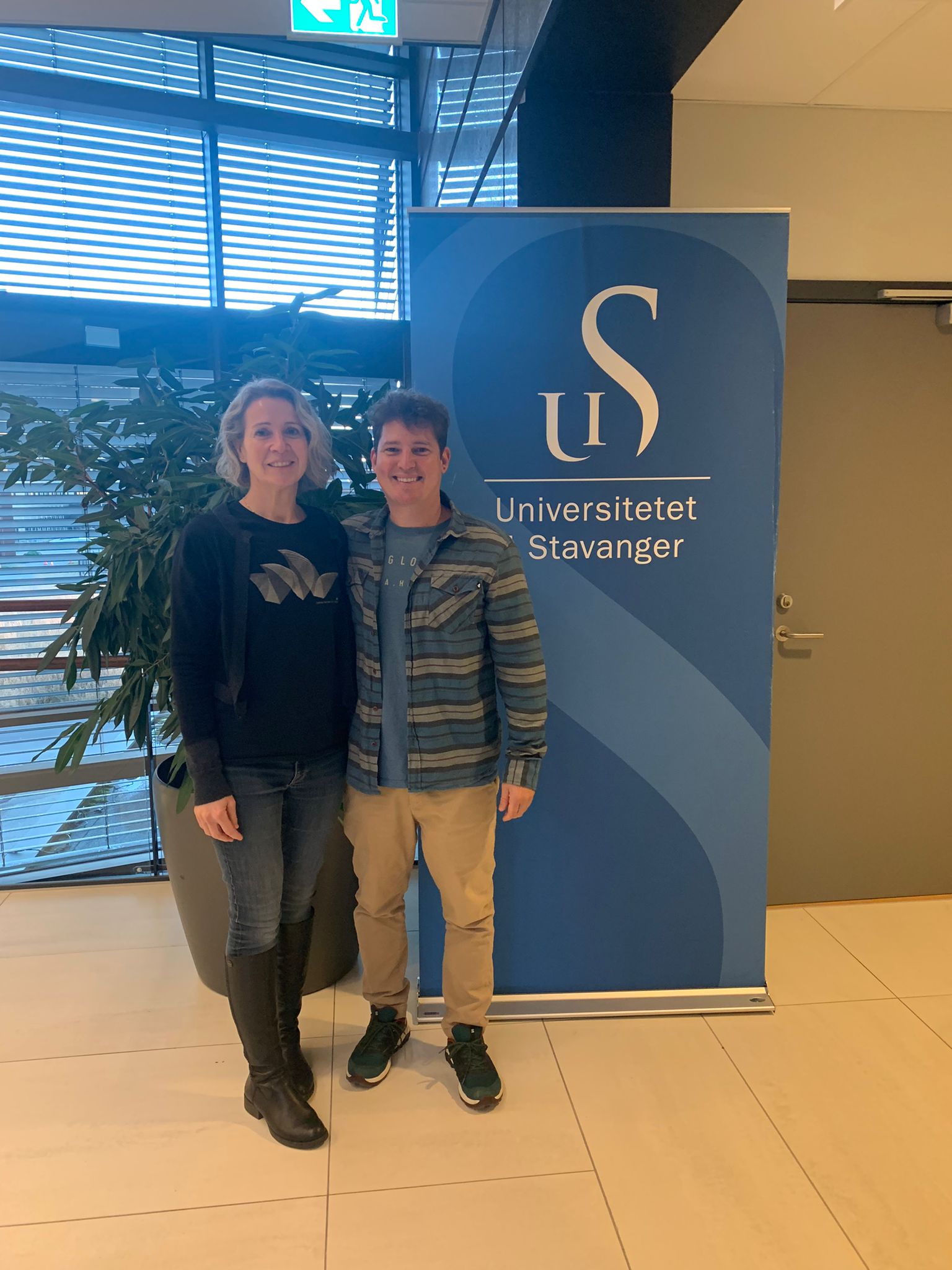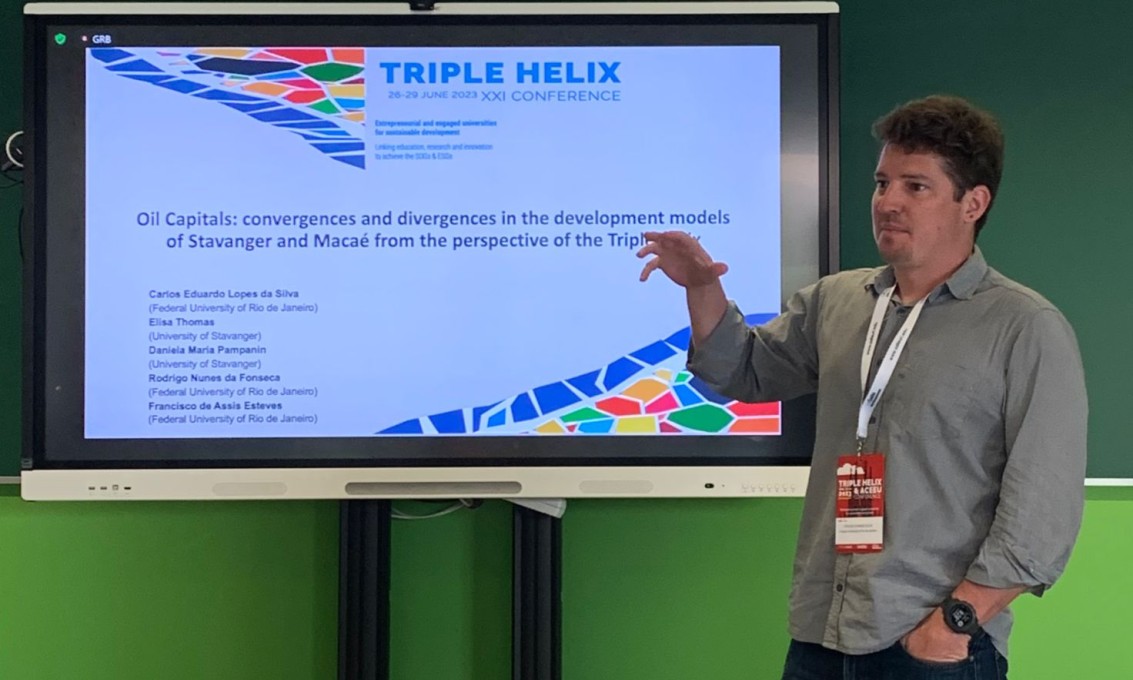Carlos Eduardo Lopes da Silva has compared the two oil cities Stavanger and Macaé in Brazil.

In the last year, the NorBra project (see fact box) has had a visit from Professor Carlos Eduardo Lopes da Silva from the Federal University of Rio de Janeiro (UFRJ).
The NorBra-project started in 2017, and it is funded by HK-dir. The project is a collaboration between UiS and the Brazilian university Federal University of Rio de Janeiro. The aim of the project is to gear the future generation towards a sustainable use of the environment.
Professor Daniela M. Pampanin leads the project at University of Stavanger.
One-health
In 2020, the NorBra project developed in a bigger consortium including more partners from academia (UiS, UFRJ, the Norwegian University of Life Sciences, the University of California Riverside), research institutions (FIOCRUZ, Helse Stavanger) and the industrial sector, and got funded for a 4 year period (till 2025) to develop a One Health perspective, as key for a sustainable future.
Prof. da Silva exchange visit focused on research on the regional development of the cities of Stavanger (Norway) and Macaé (Brazil) since the discovery of oil. The study sought to understand the actions and role of the Triple Helix actors (government, academia and industry) in the formation of current innovation ecosystems in the cities. From this, a discussion on how these two places prepares to face the same challenges, such as the green transition and decarbonization of the economy, took place. More information can be found in the coming out research paper entitled “Oil Capitals: convergences and divergences in the development models of Stavanger and Macaé from the perspective of the Triple Helix”, da Silva et al., 2024 in Triple Helix XXI conference book.
Common challenges
Although the two cities have completely different macroeconomic and social contexts, they also have much in common. The oil industry brings the cities together in terms of culture and commercial relations, which increases the opportunities for cooperation and synergies.
"Mapping the opportunities for collaboration is crucial to strengthening research and innovation work between universities and companies in these two regions. Both regions face many of the same challenges, mainly in the area of sustainability," he says.
He explains that the NorBra project has an important role in supporting collaboration that goes beyond the research field, for example technological challenges or solutions developed by start-up companies.
"During the year in Stavanger, I had the opportunity to present Macaé's innovation ecosystem and discuss synergy opportunities with actors from various sectors. As a result, we are now starting a program where entrepreneurs can share their experiences. This will be launched in 2024, and we are planning new projects in the area of waste management and decarbonisation.
Prof. da Silva wishes to thank the NorBra Project for making this one-year visit possible, and especially Daniela M. Pampanin and Elisa Thomas for their connections and guidance in the research. He believes the experiences he brings back to Brazil will contribute to the development of new projects.
"Perhaps this exchange of experience can also strengthen Rio de Janeiro's regional development? I hope that the connections that have been established can contribute to new projects and solutions, also for Stavanger," concludes da Silva.
Prof. da Silva's visit was funded by HK-dir (The Directorate for Higher Education and Skills) and CNPq/Brazil.
One Health perspective, a key for a sustainable future
3 million NOK fromHK-dir (formerly known as DIKU)
UiS, UFRJ, NMBU, University of California Riverside, FIOCRUZ, Helse Stavanger.
